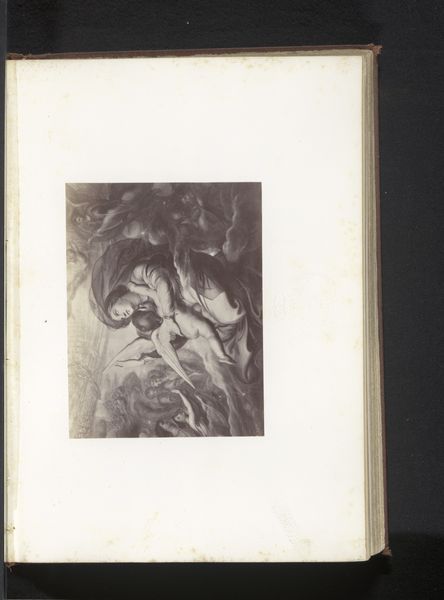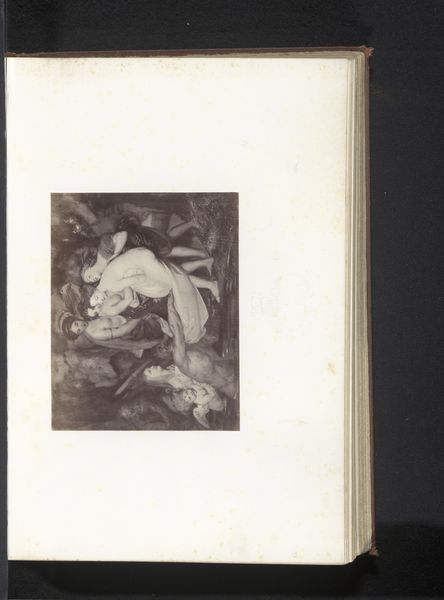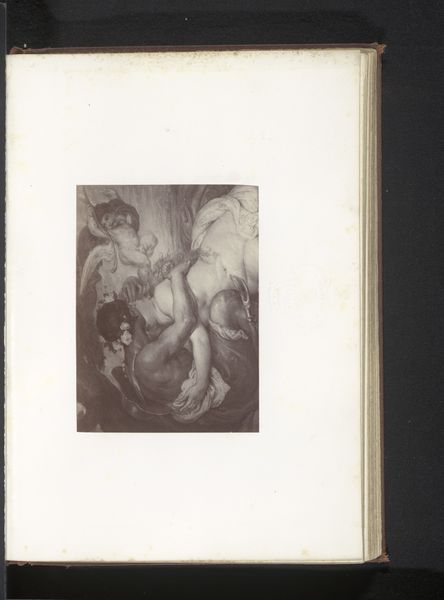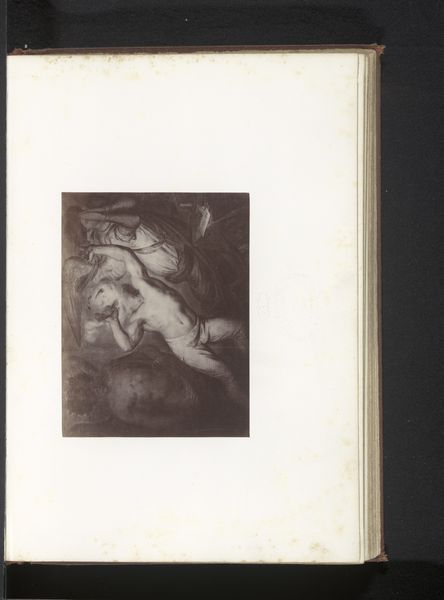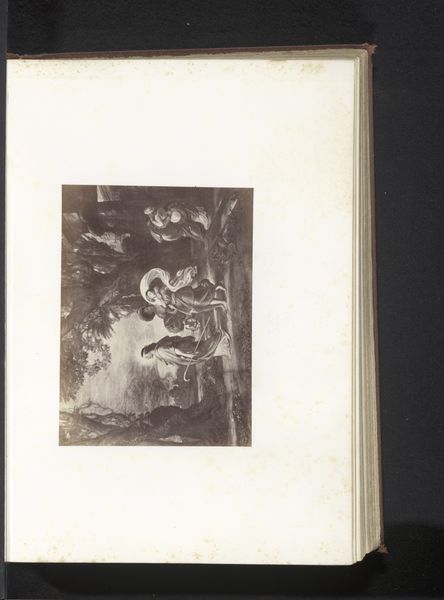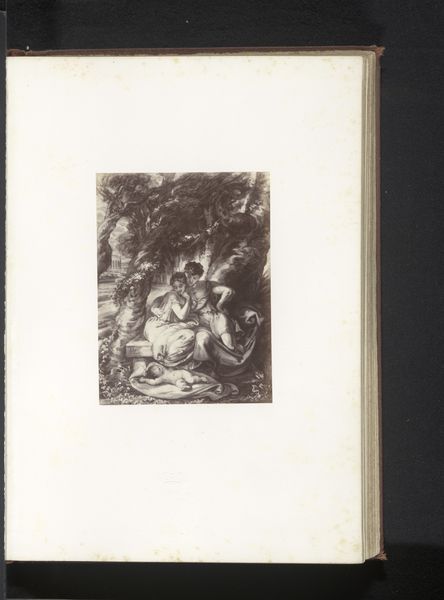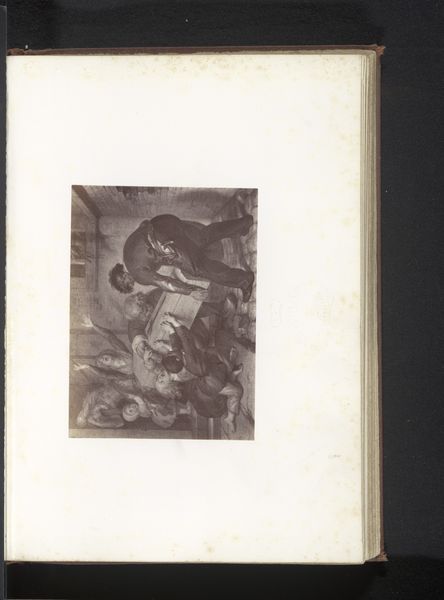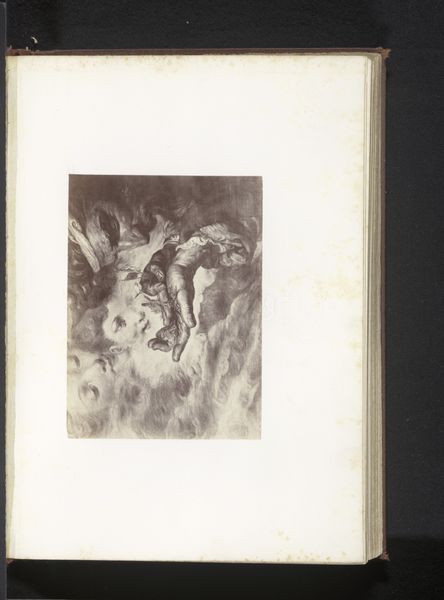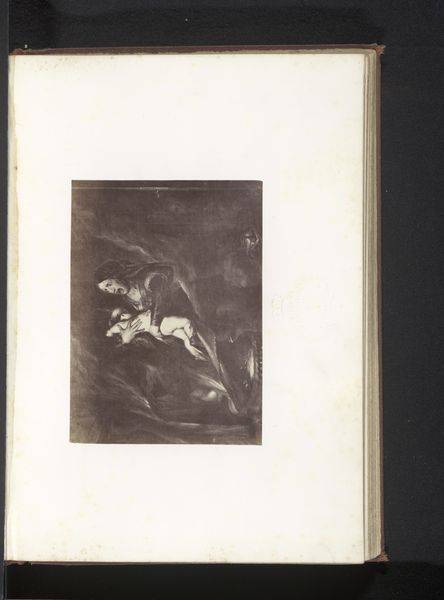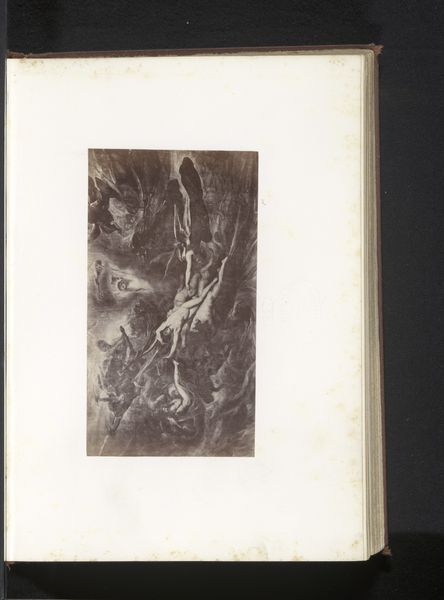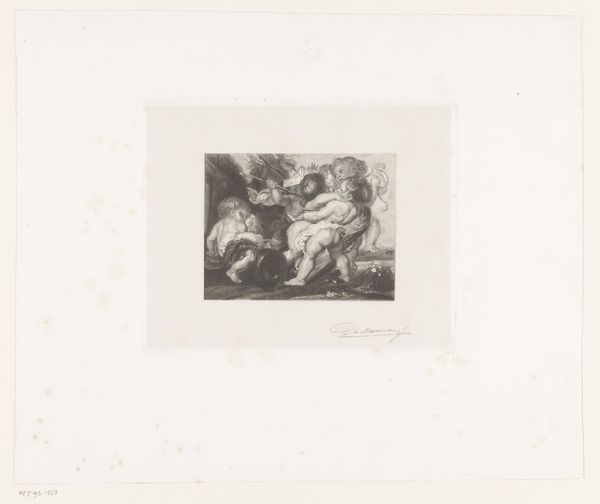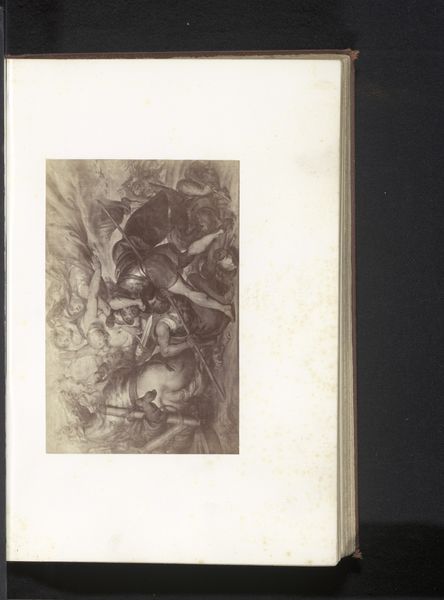
print, photography, gelatin-silver-print
#
ink paper printed
# print
#
light coloured
#
white palette
#
figuration
#
photography
#
gelatin-silver-print
#
history-painting
#
academic-art
Dimensions: height 113 mm, width 149 mm
Copyright: Rijks Museum: Open Domain
Curator: The work presented here is a photographic reproduction titled "Fotoreproductie van Kanonnenvlees door Antoine Wiertz," or, translated, a "photographic reproduction of Cannons' Meat by Antoine Wiertz." It's a gelatin-silver print from before 1868 by Edmond Fierlants. Editor: "Cannon Fodder." Even in monochrome, that title and image are undeniably disturbing. A mass of infant-like figures piled upon each other...it's unsettling. The way they're intertwined is claustrophobic. Curator: Indeed. Wiertz’s original painting aimed to depict the tragic waste of life in warfare. What is particularly intriguing about Fierlants’ reproduction is its accessibility through photography. The photograph democratized the imagery, moving it beyond the confines of the elite art world and potentially influencing a much broader audience. Editor: The swarming bodies – while cherubic in form – seem robbed of innocence. They evoke familiar symbolism, reminiscent of religious imagery, perhaps referencing sacrificial lambs, compounding the tragedy. The message becomes potent when juxtaposed with those earlier artistic expressions, yet inverted with tragic purpose. Curator: That is quite insightful. Consider also the historical context. Wiertz produced this during a time of significant socio-political upheaval and rampant militarism. Fierlants' photography keeps this critical commentary accessible well into subsequent generations. Photography becomes an active agent in societal memory. Editor: The choice of infants really cuts through. Symbolically, babies represent potential, promise. Piling them, creating a mass, becomes a visual metaphor for crushing that potential through systemic violence. Even today it makes us stop in our tracks and truly consider war and its many insidious facets. Curator: Yes, it served and still serves as a potent reminder of war’s cost and photography played an undeniable part in bringing that to the public at large. Fierlants work is thus also interesting in a socio-historical sense. Editor: Seeing those archetypes in that context gives us a clear, piercing reminder of not only war’s past horrors, but also prompts important dialogues about its reverberations into the future.
Comments
No comments
Be the first to comment and join the conversation on the ultimate creative platform.
